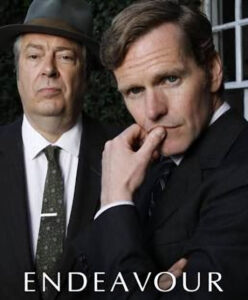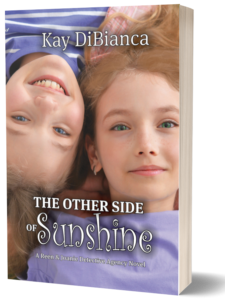by Debbie Burke
@burke_writer

Medea – public domain
Today’s post is an excerpt from my upcoming book, The Villain’s Journey – How to Create Villains Readers Love to Hate (publication Summer 2025).
In 1911, Rudyard Kipling wrote: “The female of the species is more deadly than the male.”
From ancient times to contemporary novels, memorable women villains back up his statement.
How do female villains differ from male villains?
The most obvious is physical size and strength. Although there are kick-ass women who can bench press more than their own weight, females generally have smaller builds and are lighter in weight. Instead of brute force often used by their male counterparts, female villains rely more on brains, strategy, cunning, deceit, and manipulation to achieve their goals.
Statistically, men commit more crimes than women. Per the FBI in 2019, males were charged for 72.5% of overall crimes while females accounted for 27.5%. Generally, males account for more violent crimes (78.9%), although female violent offenses are trending up. Women’s crimes tend more toward larceny and theft offenses (42.6%).
Good news for female villains: women tend to receive more lenient sentences than men. According to 2012 research by Sonja B. Starr, University of Michigan Law School, found that, controlling for the crime, “men receive 63% longer sentences on average than women do,” and “[w]omen are…twice as likely to avoid incarceration if convicted.”
Let’s take a look at several classifications of female villains:
The Power Behind the Throne – Through history, smart, daring, ambitious female villains allied themselves with powerful men. Although they stayed in the background, they manipulated the strings of the male figurehead puppet.
Medea is a Greek tragedy written by Euripides, first performed in 431 BCE. Medea is a ruthless princess and sorceress with divine powers who helps Jason steal the Golden Fleece to secure his royal position. However, when Jason is unfaithful to her, to strike back at him, Medea murders their own children.
Despite the horrific crime, capricious Greek gods spared her from punishment. She goes on to marry again.
In The Tragedy of Macbeth, Shakespeare’s play originally performed in 1623, the ambitious Lady Macbeth cajoles, belittles, and shames her husband into murder to attain the Scottish throne. Despite her ruthlessness, she still has a human conscience. Although she didn’t commit murders, she instigated them, and her hands are bloody. She sleepwalks at night, mumbling about killings. No matter how much she scrubs she can’t wash invisible bloodstains from her hands. “Out, damned spot, out, I say!”
For Lady Macbeth, the price of being the power behind the throne is too high and she kills herself.
 The Femme Fatale– In the Bible, Salome danced for King Herod, who was so taken by her that he granted her request for the head of John the Baptist on a platter. She exemplifies the trope of beautiful women who use allure, mystery, and seduction to gain power and control over males.
The Femme Fatale– In the Bible, Salome danced for King Herod, who was so taken by her that he granted her request for the head of John the Baptist on a platter. She exemplifies the trope of beautiful women who use allure, mystery, and seduction to gain power and control over males.
Hard-boiled authors James M. Cain, Dashiell Hammett, Raymond Chandler, and other pulp writers popularized the sultry, manipulative female who captivates a male character then leads him to doom. She convinces the man to commit a crime. Afterward, she often leaves him to take the fall.
Cora in The Postman Always Rings Twice (James M. Cain, 1934, Knopf) owns a diner with her much older husband Nick. When a handsome drifter arrives on scene, he and Cora have a passionate affair that leads to Nick’s murder and ultimately catastrophe for the lovers.
The bestselling novel has been adapted to sizzling film versions with actors Lana Turner and John Garfield in 1946, and with Jessica Lange and Jack Nicholson in 1981.
In Double Indemnity, also by Cain (originally serialized in 1936 in Liberty Magazine), a conniving wife Phyllis wants to get rid of her husband for the insurance money. She mesmerizes insurance agent Walter into agreeing to murder. After they kill the husband, the company is suspicious and withholds payment, dooming the adulterers.
In the 1944 film, the characters are memorably played by Barbara Stanwyck and Fred MacMurray.
In The Maltese Falcon by Dashiell Hammett (1930, Knopf), Brigid O’Shaughnessy is a seductive fortune seeker who hires private detective Sam Spade under false pretenses. Her true quest is the Maltese Falcon, a gold, bejeweled statue disguised under black enamel. She leads him on a merry chase through a journey of violence and murder.
Although Spade succumbs to Brigid’s wiles he recognizes her duplicity and ultimately turns her into the police for murder.
The 1941 film version starred Humphrey Bogart, Mary Astor, Peter Lorre, and Sydney Greenstreet, and is hailed among the greatest movies of all time.
Financial gain and independence are often the motivations for femme fatales. They exploit their sexuality to manipulate men into helping them. But their behavior comes with a steep price—life on the run, prison, or death.
By the latter part of the 20th century, the female villain takes power into her own hands, not depending on a proxy male to achieve her desires.
The Tyrant – Nurse Ratched in One Flew Over the Cuckoo’s Nest by Ken Kesey (1962) exerts total control over the inmates in a mental asylum. Under her calm, serene demeanor, she is a vicious sadist who punishes anyone who defies her. In the 1975 film, Oscar winner Louise Fletcher etched the bland yet terrifying character in public consciousness.

Kathy Bates as Annie Wilkes
Photo credit: Wikimedia Commons
Annie Wilkes in Stephen King’s Misery (1987) is another plain, middle-aged woman hiding a vicious heart. Kathy Bates brought the role of “number one fan” to life.
Lady Psychopaths – In the 1992 film Basic Instinct, Sharon Stone plays Catherine Trammel, a brilliant psychopathic author who seduces both men and women. Her lovers wind up stabbed to death with an ice pick. Since the murders are eerily similar to those described in her bestselling novels, she becomes the prime suspect. She enjoys playing cat and mouse with the police, teasing and taunting them, and deftly maneuvers her way out of conviction. The chilling end of the movie leaves no doubt that she intends to continue her pattern.
 For a fresh take on a psychopath, I recommend the 2019 novel My Sister, The Serial Killer by Nigerian author Oynkan Braithwaite. Family loyalty forces a conscientious woman to cover up her younger sister’s crimes. The thriller is a fascinating study of manipulation by a narcissist who is more distressed by her melting ice cream cone than the terrible harm she causes others.
For a fresh take on a psychopath, I recommend the 2019 novel My Sister, The Serial Killer by Nigerian author Oynkan Braithwaite. Family loyalty forces a conscientious woman to cover up her younger sister’s crimes. The thriller is a fascinating study of manipulation by a narcissist who is more distressed by her melting ice cream cone than the terrible harm she causes others.
Mean Girls– Around puberty in real life, the “mean girl phenomenon” often appears. Adolescent young women develop razor-like tongues to shred their victims and perfectly manicured claws to eviscerate them. They form packs, also known as cliques, where they band together to humiliate victims, cornering them to belittle their appearance, clothes, makeup, lack of popularity, and other petty issues. They often turn on each other—their best friend can change to their worst enemy in the blink of an eyelash extension.
Examples in contemporary fiction include the girls who mercilessly bully Carrie in Stephen King’s novel; Pretty Little Liars, a YA series by Sara Shepherd; Dare Me by Meg Abbott.
~~~
Is Kipling right that the female of the species is more deadly than the male?
TKZers, what’s your verdict?
~~~
In the comments, please nominate your favorite female villain of all time and why she’s memorable.
If your own work features a female villain, please share the details with us.
~~~

Cover by Brian Hoffman
Jerome Kobayashi’s roots go deep in his cherry orchard on Montana’s Flathead Lake where his wife’s ashes are buried. He refuses to sell his land, but a female billionaire won’t take no for an answer.
Meet my latest female villain in Fruit of the Poisonous Tree. FREE today on Kindle.
Link
To be notified when The Villain’s Journey is published, please sign up for my mailing list.




 Every character is the hero of their own story. Even the villain.
Every character is the hero of their own story. Even the villain.












 The Femme Fatale– In the Bible,
The Femme Fatale– In the Bible,
 For a fresh take on a psychopath, I recommend the 2019 novel
For a fresh take on a psychopath, I recommend the 2019 novel 








 Like bang for your buck? I have a
Like bang for your buck? I have a 